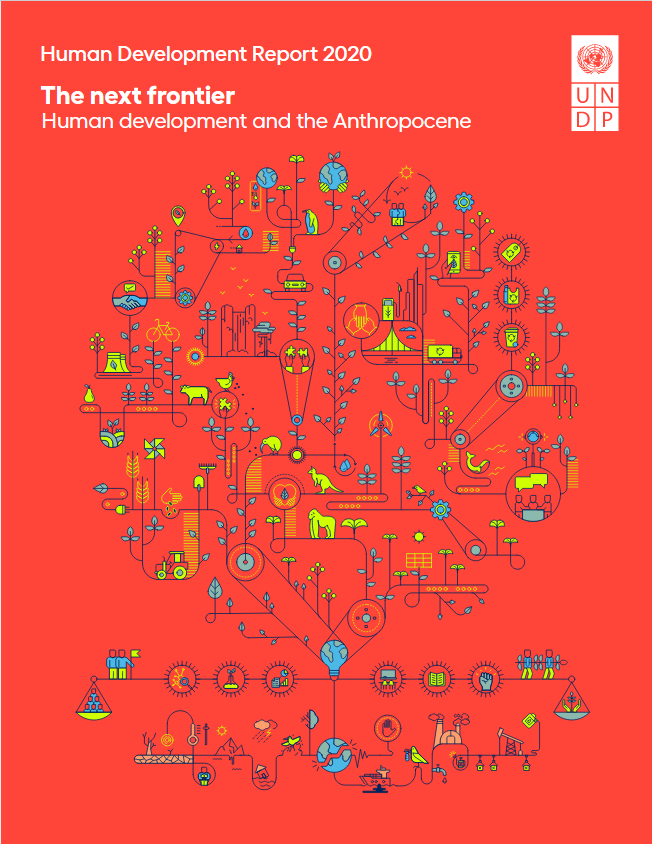According to the United Nations Development Programme’s latest Human Development Index (HDI), Guyana made minimal progress in development in the year 2019.
The index ranks Guyana 122nd of 189 countries and shows that worrying indicators, including the high number of maternal deaths and significant gender inequality, persist.
According to the Human Development Report 2020, titled “The Next Frontier: Human development and the Anthropocene,” Guyana remains in the Medium Human Development group of countries. It also remains the second lowest ranked CARICOM member, ahead of only Haiti, which is in the Low Human Development group.
Guyana has been given a value of 0.682, with an average life expectancy of 69.9 years, an average of 11.4 expected years of schooling, and a Gross National Income of 9,455 per capita expressed in constant 2017 international dollars, converted using purchasing power parity (PPP) rates.
The 2020 report presents the 2019 HDI (values and ranks) for 189 countries and UN-recognised territories, along with the Inequality-adjusted Human Development Index (IHDI) for 152 countries, the Gender Development Index (GDI) for 167 countries, the Gender Inequality Index (GII) for 162 countries, and the Multidimensional Poverty Index (MPI) for 107 countries.
The report’s title acknowledges the impact humans have had on the Earth, including climate change, rupturing inequalities and forced migration due to conflict and crisis. These are all “results of societies that value what they measure instead of measuring what they value,” it notes, while explaining that the pressures exerted on the planet have become so great that scientists are considering whether the Earth has entered an entirely new geological epoch: the Anthropocene, or the age of humans.
“It means that we are the first people to live in an age defined by human choice, in which the dominant risk to our survival is ourselves,” the report stresses, before adding that advancing human development while erasing such planetary pressures is the next frontier for human development.
The COVID-19 pandemic and its impact are not yet included in this impact. Data reflecting those changes and its socioeconomic fallout in 2020 will be available in 2021.
It, however, for the first time presents an adjustment to the HDI for planetary pressures.
The Planetary pressures–adjusted HDI (PHDI) adjusts the standard HDI by a country’s level of carbon dioxide emissions and material footprint, each on a per capita basis. For countries on the lower end of the human development spectrum, the impact of the adjustment is generally small. For high and very high human development countries the impact tends to become large, reflecting the various ways that their development paths impact the planet.
Guyana and the rest of the Caribbean are however not reflected in this measure.
The report says that between 1990 and 2019, Guyana’s HDI value increased from 0.548 to 0.682, the country’s life expectancy at birth increased by 6.5 years, mean years of schooling increased by 1.7 years and expected years of schooling increased by 1.4 years.
It also says that for every 100,000 live births in the country 169 women die from pregnancy related causes, the adolescent birth rate in the country is 74.4 births per 1,000 women of ages 15 to 19, while female participation in the labour market is 43.9 per cent.
From Latin America and the Caribbean, countries which are close to Guyana in 2019 HDI rank and to some extent in population size remain Belize and Suriname, which have HDI rankings of 110 and 97, respectively
The report says while Guyana’s HDI for 2019 is 0.682, when the value is discounted for inequality, the HDI falls to 0.556; a loss of 18.5 per cent due to inequality in the distribution of the HDI dimension indices. While Belize and Suriname show losses due to inequality of 22.6 per cent and 27.5 per cent, respectively. The average loss due to inequality for medium HDI countries is 26.3 per cent and for Latin America and the Caribbean it is 22.2 per cent. The human inequality coefficient for Guyana is equal to 18.3 per cent.
Also measured is the GII, which reflects gender-based inequalities in three dimensions: reproductive health, empowerment, and economic activity. The GII can be interpreted as the loss in human development due to inequality between female and male achievements in the three GII dimensions.
The report says that Guyana has a GII value of 0.462, ranking it 115 out of 162 countries in the 2019 index. In Guyana, 31.9 per cent of parliamentary seats are held by women, and 70.9 per cent of adult women have reached at least a secondary level of education compared to 56.4 per cent of their male counterparts.
The 2019 female HDI value for Guyana is 0.662, in contrast with 0.688 for males, resulting in a Gender Development Index (GDI) value of 0.961. In comparison, GDI values for Belize and Suriname are 0.976 and 0.985, respectively. For medium HDI countries the average GDI is 0.835 while for Latin America and the Caribbean it’s 0.976.
Meanwhile, the report reveals that the most recent survey data that were publicly available for Guyana’s MPI estimation refer to 2014. It says 3.4 per cent of the population (26,000 people) are said to be multi dimensionally poor, while an additional 5.8 per cent are classified as vulnerable to multidimensional poverty (45,000 people). The breadth of deprivation (intensity) in Guyana, which is the average deprivation score experienced by people in multidimensional poverty, is recorded as 41.8 per cent. The MPI, which is the share of the population that is multi-dimensionally poor, adjusted by the intensity of the deprivations, is 0.014.





